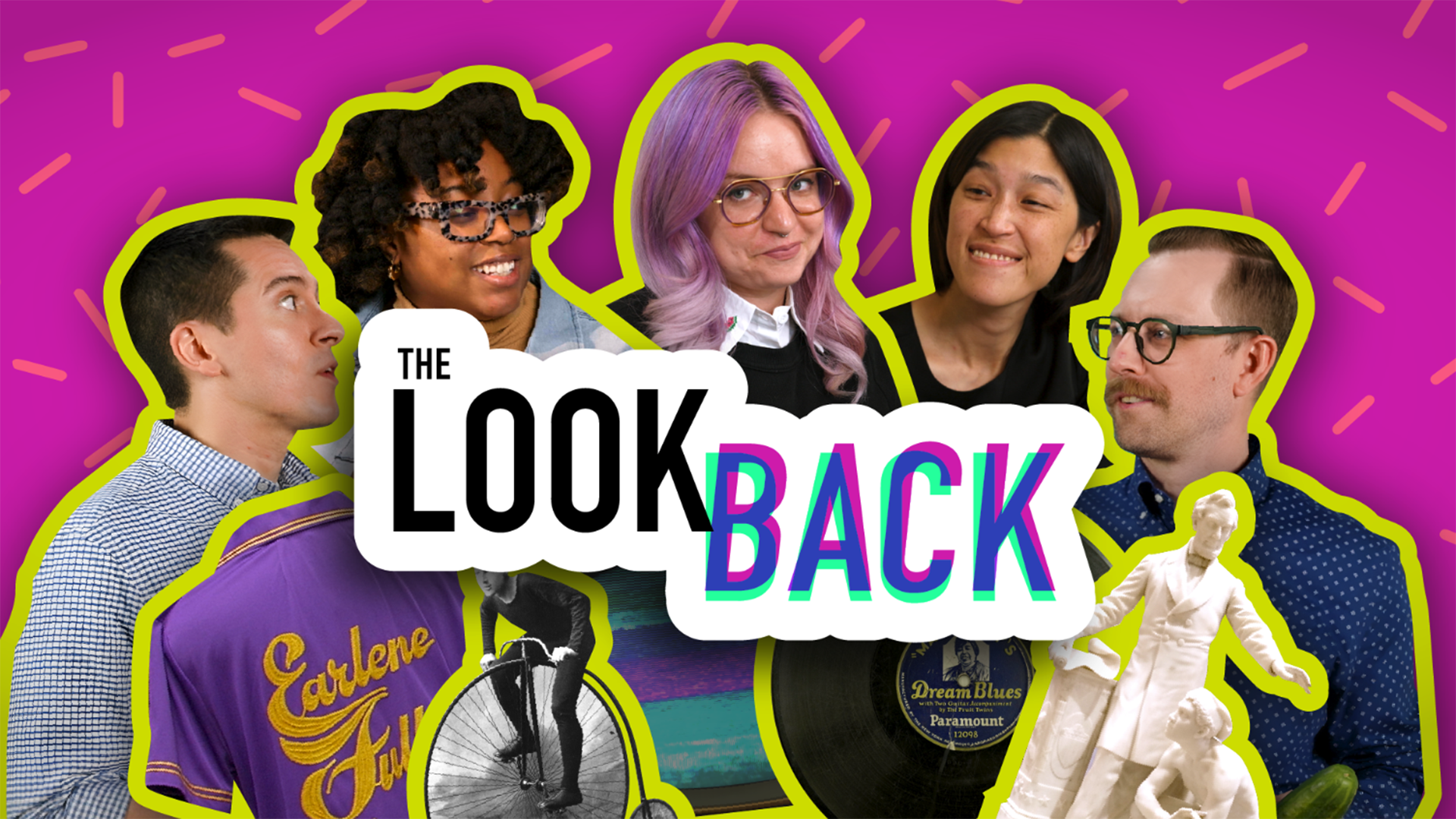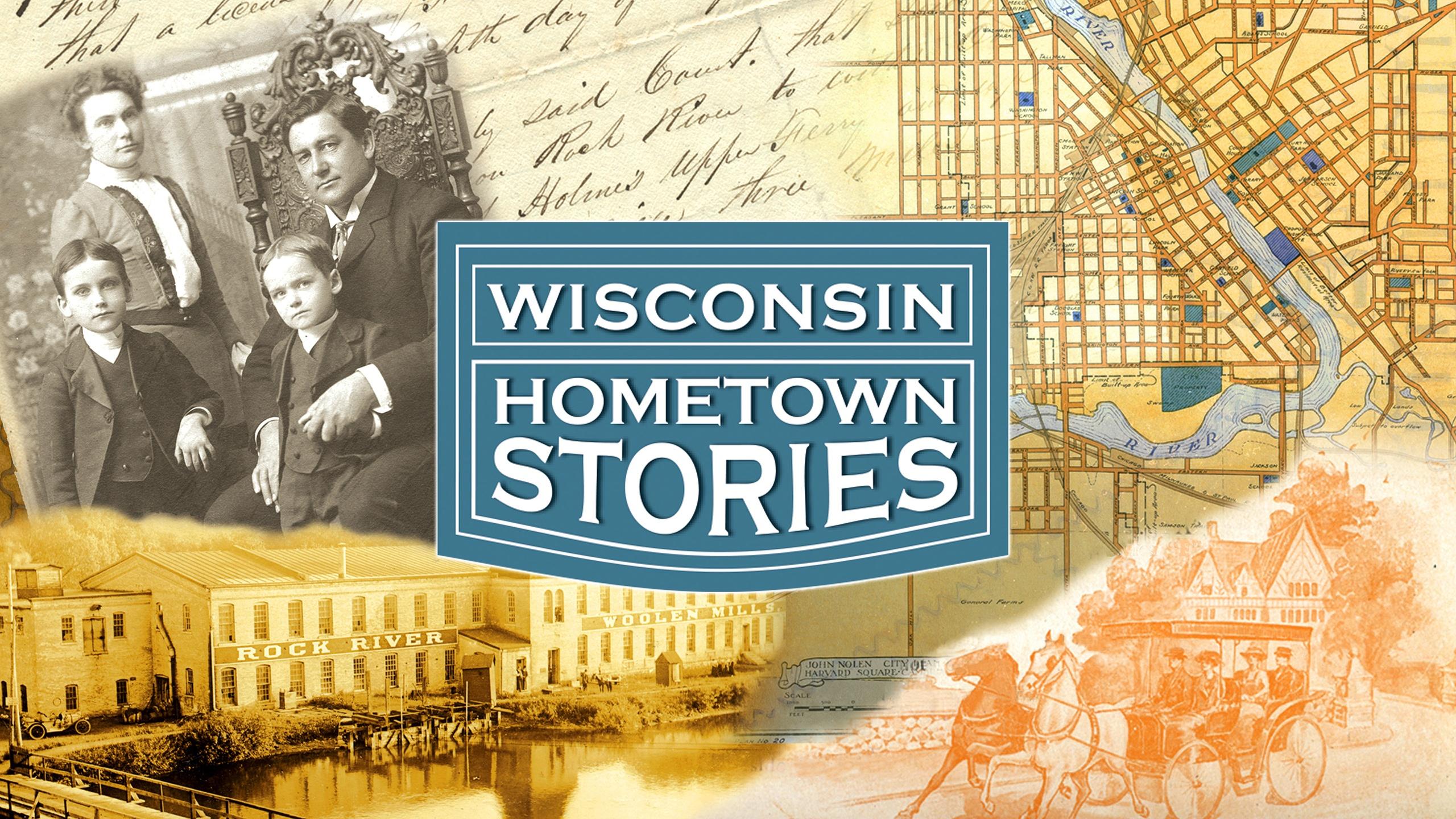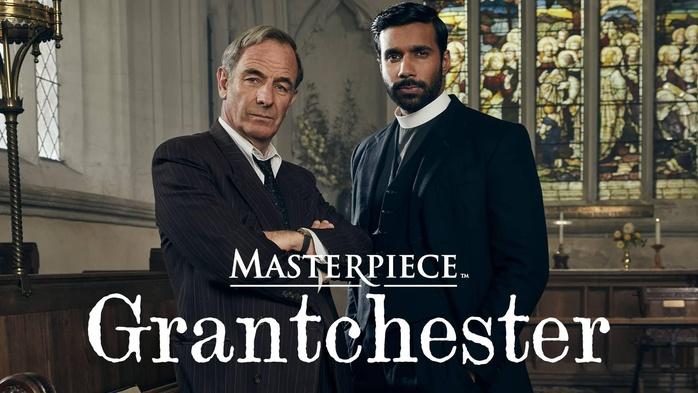Wisconsin Public Television
Transcript: In Wisconsin 922
Air Date: April 21, 2011
Patty Loew:
Welcome to In Wisconsin. Im Patty Loew. This week, Lambeau Field is a shrine to football, but 15 miles up the road, a different kind of shrine.
Woman:
We need to share it with everybody.
Patty Loew:
Come along for an overnight stay inside the states oldest lighthouse.
Man:
It might be one of Wisconsins best kept secrets.
Patty Loew:
And some poetic treats. Well visit one of Milwaukees family bakeries. Those reports and youll meet Wisconsins new poet laureate next on In Wisconsin.
Announcer:
Major funding for In Wisconsin is provided by the people of Alliant Energy, who bring safe, reliable and environmentally friendly energy to keep homes, neighborhoods and life in Wisconsin running smoothly. Alliant Energy. Were on for you. And Animal Dentistry and Oral Surgery Specialists of Milwaukee, Oshkosh, and Minneapolis, a veterinary team working with pet owners and family veterinarians, providing care for oral disease and dental problems of small companion animals.
Patty Loew:
Every year, thousands of Packer fans head to Lambeau Field, a revered football shrine. But about 15 miles to the north sits a literal shrine. Its not visited as much as the House Green Bay Built, but that may soon change thanks to a first of its kind declaration in North America by the Catholic church. In Wisconsins newest reporter Adam Schrager takes you there by way of Green Bay.
Adam Schrager:
Its been said that youth isnt always all its touted to be.
Jennie Anderson:
Hes got this charm that will reach out and grab you.
Adam Schrager:
Three-year-old Joe Anderson is a prime example.
Jennie Anderson:
He was diagnosed last July.
Adam Schrager:
With an aggressive form of leukemia.
Jennie Anderson:
His chance of survival was pretty low.
Adam Schrager:
For seven months the Anderson family basically moved into the pediatric oncology wing at Green Bays St. Vincent Hospital.
Jennie Anderson:
He became like the tenth floor mascot. Everybody fell in love with him.
Adam Schrager:
Spend even a little time with Joe, and you see why. But noninfectious diseases strike those even with infectious personalities.
Jennie Anderson:
He scared the heck out of us.
Adam Schrager:
And led these geographically blessed Packers fans to pray for a different type of Hail Mary.
Jennie Anderson:
How do you feel right now, Joe?
Joe Anderson:
Good.
Jennie Anderson:
Do you have any leukemia anymore? Nope. Why dont you? Why not?
Joe Anderson:
Because Jesus healed me.
Jennie Anderson:
Jesus healed you.
Woman:
I think the Blessed Mother has a special place in her heart here for children. You are at a place thats known as the Shrine of Our Lady of Good Help.
Adam Schrager:
Karen Tipps opened the shrine for the Anderson family as they sought a miracle.
Karen Tipps:
The stories are just really incredible.
Adam Schrager:
As she has for numerous pilgrims to Kewaunee County for the last 18 years.
Karen Tipps:
It became such a great place of devotion.
Adam Schrager:
Devotion based on a long ago divine intervention.
Karen Tipps:
In 1859, that was the year that the Blessed Mother appeared to Adele Brice.
Adam Schrager:
29-year-old Adele Brice was a Belgian immigrant, a victim of a childhood accident that cost her an eye, but gained her a renewed faith. A faith that remains celebrated in this crypt due to three separate sightings of the Virgin Mary.
Karen Tipps:
This beautiful lady spoke to her and said, I am the queen of heaven who prays for the conversion of sinners, and I wish you to do the same. Adele was weeping and wondering what more she could do. She said, What more can I do, dear lady? And the lady said, Gather the children in this wild country and teach them what they should know for salvation.
Adam Schrager:
So that is what Sister Adele did, teaching area children the catechism for the next 12 years on this site, until its significance was felt again.
Karen Tipps:
The Peshtigo Fire is known as the most devastating fire in U.S. history. It consumed 1.2 million acres of land and it killed as many as 2400 people. The chapel here stood in the way of its path. They say that the wall of flame was sometimes a mile high. It was just a horrific fire.
Adam Schrager:
Neighbors prayed the rosary and marched around the grounds trying to save their holy place.
Karen Tipps:
When wind and flame and fire would consume them in one direction, they would just turn and go in another direction. They never gave up, all night.
Adam Schrager:
The skies opened up, a driving rain fell. And exactly 12 Octobers to the day after Sister Adele reported seeing the Blessed Mother.
Karen Tipps:
When dawn broke on that following morning of October 9, they witnessed the miracle of what had happened. That as far as you could see in every direction of this spot, was nothing but ashes. But this five and a half acres, they said, was an emerald green island in a sea of ashes. And all those people who were here that night were spared from that fire.
Adam Schrager:
Since then, locals like Charlotte Gilson have believed in the curative powers of the shrine.
Charlotte Gilson:
When I was a kid, there were crippled, people came here, their parents brought them and they were healed.
Adam Schrager:
Healed like little Joe Anderson, from a potentially fatal leukemia.
Jennie Anderson:
Medically, theyll tell you that theres still a chance of it coming back. We are totally confident that its gone. I mean, we dont even question it. Its gone. We received his miracle.
Adam Schrager:
Bishops have celebrated Mass at the shrine through the years, in essence validating the significance of what happened. In 2010, that validation became official.
Bishop David L. Ricken:
To declare a moral certainty and in accord with the norms of the church, that the events, apparitions and locutions given to Adele Brice in October of 1859, do exhibit the substance of supernatural character, and I do hereby approve these apparitions.
Karen Tipps:
It was just so finally an affirmation of everything that we believe. In the churchs eyes, that final decree is what makes it all acceptable and approved. Thats what it needed.
Adam Schrager:
Karen Tipps quickly realized the impact of becoming the only approved Virgin Mary apparitions site in America.
Karen Tipps:
Lots of buses were coming from all over the country, and out of the country. Weve already got them scheduled from Canada
Adam Schrager:
When the spring snow melts, there are concerns the new 75-space parking lot may not be enough.
Karen Tipps:
Were having to re-look at everything that we do here, just in order to accommodate the interest and reaction of people.
Adam Schrager:
Already, developers have bought a nearby restaurant, leading to a fear the shrines neighboring farmland could turn into a different kind of Graceland.
Karen Tipps:
We want to maintain this as a beautiful, spiritual experience for everybody that comes here.
Adam Schrager:
A delicate balance that comes with a realization.
Karen Tipps:
We had it all to ourselves all these years, but now we need to share it with everybody.
Jennie Anderson:
But we know what happened and how it happened.
Adam Schrager:
Joe Andersons family wants to share their story and their faith.
Jennie Anderson:
I cant change peoples skepticism, but I can only tell the truth about our family.
Adam Schrager:
Understanding the questioning world we live in.
Jennie Anderson:
Hes healed. Hes good. The leukemia is gone. (cries)
Adam Schrager:
And a legend and a belief continue.
Karen Tipps:
Its a spiritual gold mine right in our midst.
Patty Loew:
The Andersons continue to take Joe to the hospital each month to meet with his doctors, and for checkups to see if the leukemia has returned. So far, it has not.
April is National Poetry Month and that seemed like a perfect reason to meet Wisconsins newest poet laureate. Bruce Dethlefsen of Westfield started his new post in January after an appointment by Governor Jim Doyle. Hes a retired teacher, coach and librarian. Dethlefsen is Wisconsins fourth poet laureate.
He joins us this week in our studio. Bruce, I think a lot of people are curious. What exactly is a poet laureate?
Bruce Dethlefsen:
Poet laureate is a person that goes around the state as an ambassador for the arts and poetry, visiting libraries and writing groups and students in schools, and promoting the arts, basically.
Patty Loew:
Well, you werent in that position very long before Governor Walker cut the $2,000 that helped fund this position. What was your reaction?
Bruce Dethlefsen:
Even though Ill continue to be poet laureate, the commission was decommissioned, and is looking for a new home. I think theyll find one, a sponsorship in the next couple of weeks.
Patty Loew:
Was it disappointing?
Bruce Dethlefsen:
Yeah. Being appointed by the governor lends a certain authority to my work. And even though Im on my own now, basically, its a good thing.
Patty Loew:
How do you get to be poet laureate?
Bruce Dethlefsen:
You have to apply. You send in samples of your work, a resume as far as poetry is concerned, and a proposal for some kind of project to do during the two years.
Patty Loew:
And your project is?
Bruce Dethlefsen:
Working with libraries to set up self-sustaining poetry readings, maybe monthly readings. I would start the first time and then help them get poets to come in on a monthly basis. And I know that in every community there are just– Wisconsin is lousy with poets. It really is. They come out and they love to read.
Patty Loew:
Yeah. And youve brought a poem to read for us.
Bruce Dethlefsen:
Yes, I have. This is called Artists, and I wrote it for Denise, who died a couple years ago. She was one of the best members of our audience at the poetry readings. She was quite an artist.
Artists.
we chase the moon
too hard sometimes
and stumble in the stars
that sparkle always blinds us
we trip and tumble down
we suffocate in stardust
drown in floodlight
and still we recreate
we sing, we write
we dance, we paint
we one more time in space
ourselves remake
return, retune
gracefully we rise again
were artist
grateful for another dreadful
chance
to chase the moon
Patty Loew:
Wonderful.
Bruce Dethlefsen:
Thank you.
Patty Loew:
What advice do you have for aspiring poets, young people who might be interested in poetry?
Bruce Dethlefsen:
Read poetry. Read everything you can about poetry. Attend poetry readings. Hang around with people who like poetry. Write. Write every day. If you wanted to be the best bowler in the world, you would go practice, and you would hang around the best bowlers you could find. Thats my advice for their art.
Patty Loew:
Do you still have to work at poetry?
Bruce Dethlefsen:
Yeah. Sometimes the —
Patty Loew:
The muse is there and sometimes not?
Bruce Dethlefsen:
Sometimes they live on your shoulders and say yes and no. Those are your editors and you want to get rid of them. Inspiration comes easily, but then the hard work starts. The revision, the sounds of the words, the repeating it over and over, until finally you figure out maybe its done.
Patty Loew:
And its wonderful.
Bruce Dethlefsen:
Thank you.
Patty Loew:
Thank you so much. Bruce Dethlefsen, Wisconsins newest poet laureate. We appreciate him sharing his poetic insights.
There are lots of places in Wisconsin that can inspire poetry. Producer Jo Garrett and videographer Wendy Woodard teamed up with poet Bianca Spriggs for a poetic treat for the ears and eyes at Peter Sciortinos Italian family-run bakery in Milwaukee.
Bianca Spriggs:
At the Peter Sciortinos Bakery
I can smell them baking
beyond the mosaic of wheat
that tiles the outside of the building
beyond the sea-foam interior
and the strings of lights
and vines that illuminate
Maria del Lume and Porticello
the votive candle that burns,
blurs into maps of home and the
beaming faces
of original owners
their faith is fragrant
has kept the Sciortino name
for almost sixty years
has kept the display cases
with their sliding doors
so a customer may gape
at the sweet sins
and indulgences alike:
cream puffs, amaretti
cheese cake, biscotti
pinwheels, streudel
batons, cassatas
croissants, macaroons
muffins, made-to-order
freshly filled canoli
and hundreds more
loom and swelter
beneath a patron’s gaze.
but, I can smell them baking
beyond all of this in the metal
hum and heat of the kitchens
they rise before the bread
to mix and roll and march
legions of vanilla biscotti
onto metal sheets
to join the baking rolls,
with the precision
of a percussion ensemble
scraping and slicing and stacking
they pace from the ovens
to the worktables over hardwood floors
their forearms are the size of loaves
and the glint of gold glimmers
from their third left fingers
beneath the flour and dough;
they remain a family recipe of prosperity
I can smell them baking
from the street
the warm blast of yeast
and sweet
the scent of home and time
that dons the walls
here, at Peter Sciortino’s Bakery,
I can smell so much more
than bread
Patty Loew:
You can read Bianca Spriggs poem by logging on to wpt.org and clicking on In Wisconsin. You can also read the other reports from our Poems about Places series, and find out more about all of the poets involved.
Patty Loew:
Looking to be inspired to write poetry? Weve got the place. Wisconsins oldest lighthouse still stands as a beacon on a bluff nearly 160 feet above Lake Michigan. Today, its on the National Register of Historic Places. One man made it his mission to open the lighthouse doors to the public. Its a doorway to Wisconsins rich maritime past in Door County.
Tim Sweet:
Rock Island might be one of Wisconsins best-kept secrets.
Patty Loew:
Located on the states northeastern most tip, Rock Island rests at the very edge of Door County.
Tim Sweet:
You have to want to get her in the first place.
-Good morning. Welcome to Rock Island.
Because its a couple ferry boat rides and a mile and quarter hike to get here.
Patty Loew:
Here is Pottawatomie Point. And getting to this point was an uphill journey for Tim Sweet.
Tim Sweet:
Come right in, please.
Patty Loew:
He used to head the group called Friends of Rock Island that took this rundown lighthouse nestled in the dolomite bluffs and made it a destination.
Tim Sweet:
Its on an island. Its on top of a 110-foot cliff. It marks the Rock Island passage. I mean, that just has– to me, that just has a cool sound to it.
Patty Loew:
But in 1945, the beacon was automated and the lighthouse abandoned, except for a colony of bats in the attic and snakes in the basement.
Tim Sweet:
It was unoccupied for 58 years. And imagine your own house not having anybody living in it, or really doing a whole lot to maintain it. You can imagine that its going to require a lot to bring a place like that back.
Patty Loew:
A lot to bring it back was an understatement.
Tim Sweet:
There were some times when, you know, Id look back and think, boy, this isnt all that easy. Weve been working on restoring the light since 99, when we first got the lantern put back in place. And everything else fell into place over the course of the next few years, so that by 2004 we were ready to open the place up to tours.
Patty Loew:
But there was one problem.
Randy Holm:
With the budgets the way they are now, there would be no way that we could hire the staff to be able to afford to have that open.
Patty Loew:
So the Friends of Rock Island formed a partnership with the Wisconsin Department of Natural Resources, which runs Rock Island State Park, to create a live-in museum.
Randy Holm:
Now we have a program where volunteers are able to come and live in the lighthouse, take care of the lighthouse, do the cleaning, give the tours and stuff in exchange for the free bed and breakfast.
Patty Loew:
No electricity, no phone and no indoor plumbing. This week, its Tim and Julie Sweets home away from home as guest docents or lighthouse tour guides.
Randy Holm:
Its really a win/win situation. The docents that come up, they get a memorable experience. And the park gets to have people living in a lighthouse and giving the history.
Patty Loew:
The lantern room is up three flights of stairs, straight up, but its well worth the climb.
Tim Sweet:
Watch your head here and when we go in through the opening.
Patty Loew:
Its the crown jewel atop the lighthouse.
Tim Sweet:
People who look out at the view and say, wow, boy, this is beautiful, what an inspirational view.
Patty Loew:
Visitors are awestruck as they take in the history and panoramic view, where you can capture a sunrise over Lake Michigan, and a sunset over Green Bay.
Tim Sweet:
And if you look at those historic photos above the light station too, youll see that all these trees were cut down so there wouldnt be anything to obscure the view down on the water.
Patty Loew:
The federal government shut down the lighthouse when they automated the light that guides ships through the spellbinding darkness.
Tim Sweet:
They took the lantern off of the lantern deck. They took the original Fresnel lense and put it in the basement, and then somehow that lense mysteriously disappeared.
Patty Loew:
It was rebuilt, along with a new fourth order Fresnel reconstructed by a Disney World engineer, all paid for with grants and private funds raised by the Friends of Rock Island.
Tim Sweet:
These lenses take a relatively small amount of light, and somehow the prisms all work to take that light and concentrate it and shine it through the magnifying lense.
Man:
Thats the actual lighthouse now.
Woman:
Oh, okay.
Patty Loew:
The new tower is solar powered to keep the beacon burning.
Tim Sweet:
Pretty much takes care of itself.
Patty Loew:
The tour is done, but the docents work is not.
Julie Sweet:
Were having chicken alfredo.
Patty Loew:
Volunteers living in the lighthouse cook their own meals without a refrigerator, without a microwave. And without running water.
Tim Sweet:
We appreciate having running water at home.
Randy Holm:
Pumping their own water, having no electricity so you have to use flashlights and stuff, its a cool way of living that most modern people dont get to do. There is no cost. No. The volunteers dont have to pay anything to stay here.
Patty Loew:
Well, sort of.
Randy Holm:
Free sometimes has connotations after you clean the bathroom after 300 people, but its a cool program. You can kind of get a sense of what it would have been like to have been a lighthouse keeper on an island out here on Lake Michigan.
Tim Sweet:
If you look at our flag over here, weve got a 1858 replica United States flag. It only has 31 stars on it. This is the site of Wisconsins oldest lighthouse. That dates back to 1836. Thats 12 years before Wisconsin even became a state.
Patty Loew:
In a way, this island has stood still, etched in that era. And each evening as visitors seemingly fade into the woods, this 900-acre island quickly reverts back to a quiet, natural landscape.
Randy Holm:
I know some people who come to Rock Island who would rather that we probably werent even talking about Rock Island because theyd rather just kind of keep it to themselves.
Patty Loew:
What they want to keep to themselves are the crystal clear waters and uncut forests, undisturbed since the first Native Americans hunted here. The Pottawatomie Lighthouse is named in their honor. Fittingly, the Pottawatomie refer to themselves as keepers of the fire. Its a flame that now burns in Tim Sweet to preserve this piece of the past.
Tim Sweet:
Wisconsin really does have a rich maritime history and this is part of it. The best thing about it is being able to share it with other people.
Patty Loew:
Its been a long journey to get to this point, and its become personal.
Tim Sweet:
I sometimes actually get choked up when I talk about this place, because it really does mean a lot to me. Rock Island is probably one of my most favorite places. I cant really think of another place that Id rather be than a place like this.
Patty Loew:
The first keeper of the light was a bachelor. David Corbin received just $1 a day, plus food and housing in 1837. Corbin is buried a few hundred feet from the lighthouse in this small cemetery. It has 12 burial sites, and its believed seven of those belong to victims of shipwrecks. The lighthouse will open its doors for the season on Memorial Day weekend, and will remain open through Columbus day in October. If you cant wait, you can get a video tour of the Pottawatomie Lighthouse. Just go to our website, wpt.org. Then click on In Wisconsin.
On the far western side of the state, efforts are underway for two more light stations on Lake Superior to get a make-over. The process would be similar to this restoration that took place at the Raspberry Island lighthouse in 2007, which is part of the Apostles Islands National Lakeshore. Renovations on the two Michigan Island light stations could include cultural landscapes and reconstructed gardens. To watch our full report on the Raspberry Island Lighthouse restoration, just go to wpt.org and click on In Wisconsin.
Next week, we salute a team of journalists who is retiring, the team of Jo Garrett, Frank Boll and Brad Wray have traveled the world to bring you reports that matter close to home. Heres a preview of the reports airing next week on In Wisconsin.
Man:
Ding dong and donna.
Jo Garrett:
Hi, Im Jo Garrett, and Im here at Jurustic Park. Its not like other parks.
Man:
This doesnt quite fit with the classical artists. Have you noticed that?
Jo Garrett:
Join us for a look at Jurustic Park.
Hes catching the attention of Popular Science magazines and revolutionizing fishing.
Man:
When the lures fall off, they end up in the bottom of the lake or the river. They will not degrade.
Jo Garrett:
Its a whopper of a Wisconsin environmental fish tale. Plus, youll meet Milwaukees Tree Cop.
Man:
Thats my beat. The whole city of Milwaukee. All of it.
Jo Garrett:
And were going out on a limb with a man on a mission. Just listen to this.
Man:
We got 284,000 trees in the city of Milwaukee. Those trees save the homeowners and the taxpayers $21 million a year.
Patty Loew:
Those In Wisconsin reports next Thursday at 7:30, right here on Wisconsin Public Television.
We invite you to check out our interactive blog called The Producers Journal. Its updated weekdays by people who work in front of the camera and behind-the-scenes on In Wisconsin. You can find The Producers Journal blog at wpt.org. Then click on In Wisconsin.
Get a sneak peek at the projects were working on and the places weve been. We leave you this week with the magic of the marsh. Just north of Madison, the Cherokee Marsh covers more than 4,000 acres. Its the largest wetland in Dane County and was created by the former glacial Lake Mendota. Enjoy this diverse landscape and have a great week in Wisconsin.
Announcer:
Major funding for In Wisconsin is provided by the people of Alliant Energy, who bring safe, reliable and environmentally friendly energy to keep homes, neighborhoods and life in Wisconsin running smoothly. Alliant Energy. Were on for you. And Animal Dentistry and Oral Surgery Specialists of Milwaukee, Oshkosh, and Minneapolis, a veterinary team working with pet owners and family veterinarians, providing care for oral disease and dental problems of small companion animals.
Search Episodes

Donate to sign up. Activate and sign in to Passport. It's that easy to help PBS Wisconsin serve your community through media that educates, inspires, and entertains.
Make your membership gift today
Only for new users: Activate Passport using your code or email address
Already a member?
Look up my account
Need some help? Go to FAQ or visit PBS Passport Help
Need help accessing PBS Wisconsin anywhere?

Online Access | Platform & Device Access | Cable or Satellite Access | Over-The-Air Access
Visit Access Guide
Need help accessing PBS Wisconsin anywhere?

Visit Our
Live TV Access Guide
Online AccessPlatform & Device Access
Cable or Satellite Access
Over-The-Air Access
Visit Access Guide
 Passport
Passport






Follow Us